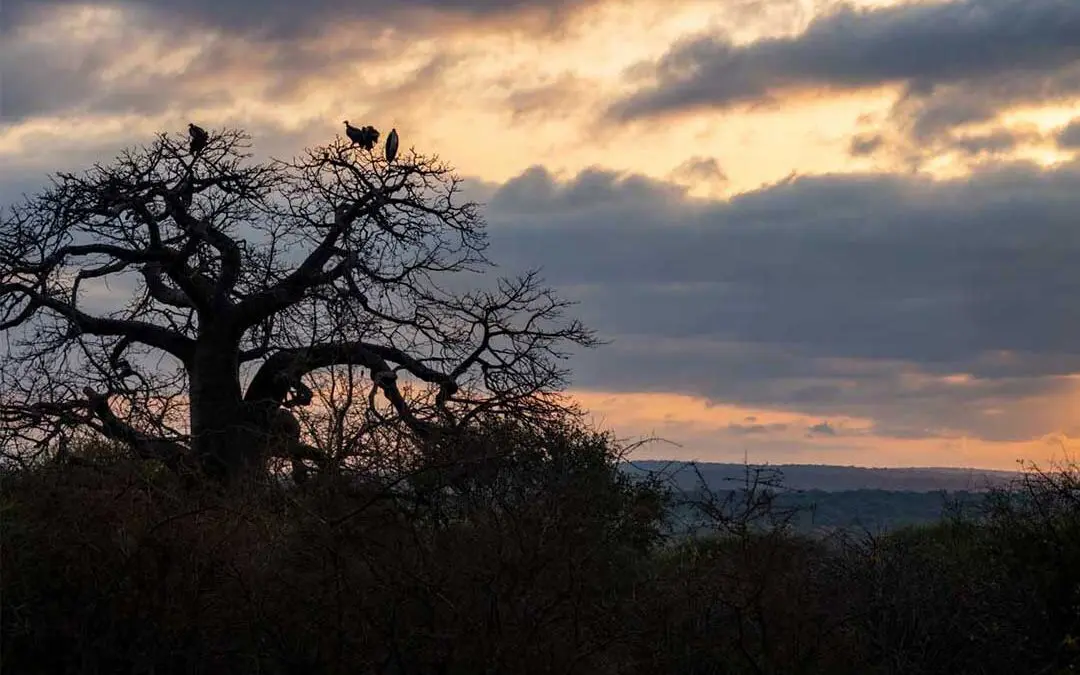On the morning of September 30, 2001, professional hunter Johan Calitz awoke with a start. Outside his tent the quiet sounds of a safari camp coming to life mixed with the chatter of raucous francolins greeted the sunrise. This is how Johan began most days, his ears filled with the sounds of cooks and trackers preparing for the hours ahead, with birdsong and often, the last roars of lions just before sunrise.
This was normally when he felt most at ease, the sounds of the African bush a tonic for the stresses of running large safari operations in Botswana and Mozambique. But this morning Johan felt a sense of dread so profound he was tempted to roll over and spend the day in bed. A weight, a vague heaviness upon his chest, left him paralyzed with apprehension.
Johan was accompanying an old friend and client on a safari in Tanzania, and felt out of place in this somewhat ill-defined role. Johan was a safari operator of note across the African continent, but here he was asked to act as a “quasi observer” on someone else’s hunting concession, deferring to a French PH with much less experience.
Johan Calitz is a man with admittedly strong views when it comes to hunting dangerous game. He shot his first cape buffalo at 14, and has spent a lifetime sharing his love of Africa with clients and friends. He brings an expertise to his job that recalls the professional hunters of time gone by – mechanic, cook, field surgeon and crack shot, with a ‘bush sense’ honed by the military and now by his Bushmen trackers.
He speaks of his time in the Bush Wars of Angola in only the vaguest of terms, generalities that let you know he’d like to move onto another subject. But if you have hunted with him, if you have shared a campfire and shown respect for the game and that land he so dearly loves, he will tell you the story of what happened that fateful Sunday in Tanzania, when against his better judgment, Johan pulled the covers off and climbed out of bed.
“I contemplated even being on the safari,” he recalls. “What was difficult for me was figuring out what role I was to play. Would I play the role of companion? Would I be there to consult with my friend or the French professional hunter? Or would I be asked to sort out problems that I didn’t start? In the end that’s exactly how it happened. I wasn’t consulted in which manner we were to hunt these beasts, but when there was trouble, I was invited to help sort it all out.”
There already had been problems as the safari progressed – busted stalks and poor decisions, and the language barrier was proving difficult for the group. Neither Johan nor his friend spoke French, and the Frenchman spoke only the most basic English. The resulting confusion weighed upon Johan as he lay in bed on that beautiful Sunday morning feeling great unease and on the brink of staying in camp for the remainder of the trip.
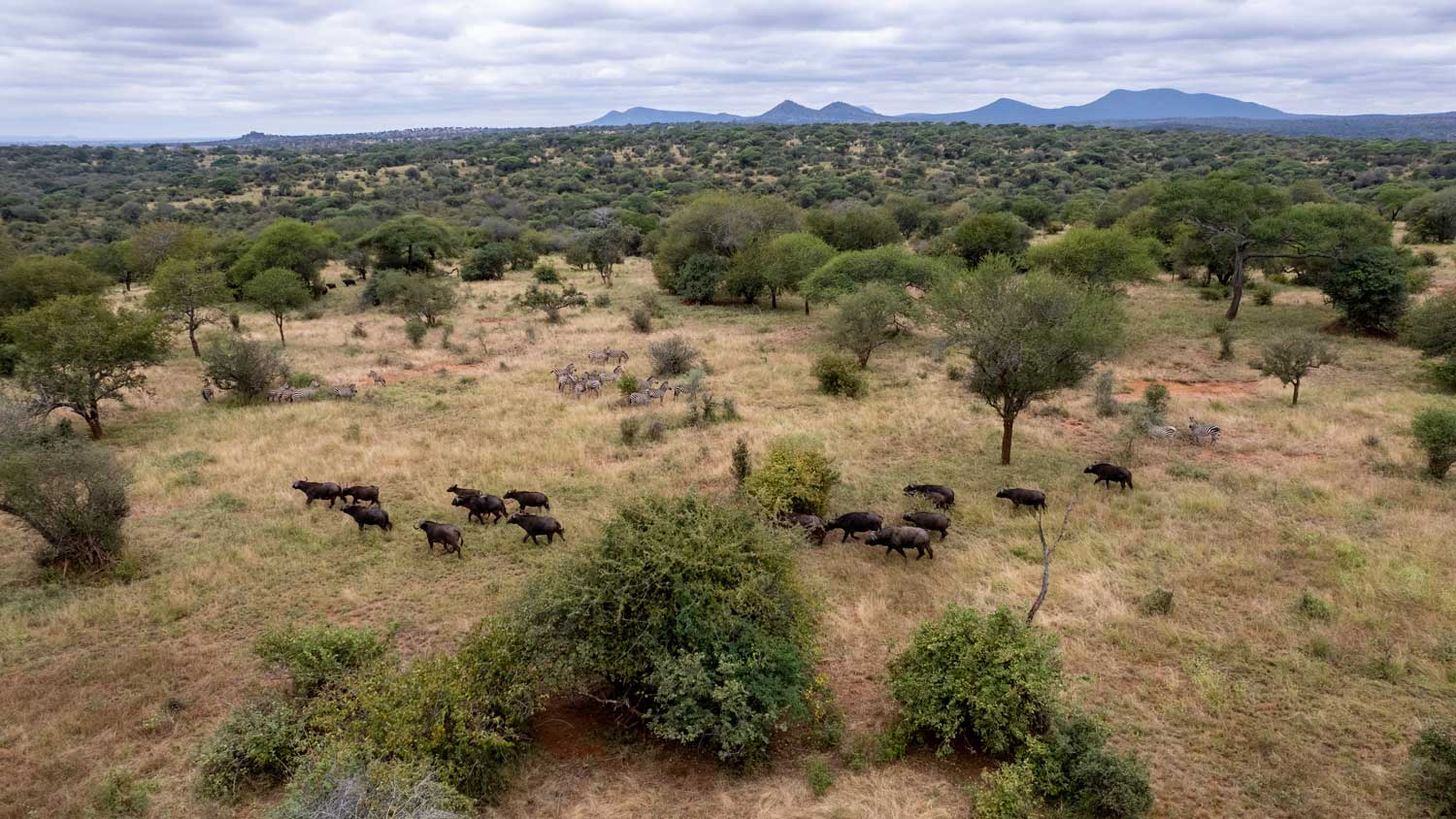
The day began typically enough for a three-week safari. The group was making a circuit through the concession, checking leopard baits for any hits. One showed the signs of a very big tom from just hours before, and a blind was quickly fashioned from the surrounding flora for an evening hunt. They left the area and went to zero the gun at 50 yards – the distance from the blind to the tree where the bait was hung.
By now it was mid-morning, with camp still a good drive ahead, and Johan found himself holding his tongue as the young PH laid out his plans for the day. When Johan tells the story some five years later, he voices an opinion he reluctantly decided to keep silent that morning in Tanzania. One thing a professional hunter does not do is question another on how he conducts a safari, and Johan held to that code, despite the difference in opinion.
“I felt we should go back to camp. We should relax, get the client in a mental state where he was at ease and had confidence – that’s what you do. You deal with the leopard, and the leopard alone. My fellow professional hunter was of the opinion that we should quickly head out and shoot something else as it was still early in the day. To me, that was not the greatest of ideas. Because if you end up wounding something and have to track it for a couple of hours . . . or if you shoot poorly, you might worry about your shooting and your mental state is not right. Then, you find yourself in the blind waiting for the leopard and you are doubting yourself . . . and a leopard blind is not a place for doubt.”
That is the practical side of a professional hunter speaking – the voice of a man entrusted to plan and adjust to the ever-changing challenges and opportunities of safari in order to maximize success. But in that PH beats the heart of the hunter, and the decision to try for another animal struck a wrong chord with that side of Johan as well.
Safari is about the experience – whether you shoot a record-book animal or get the truck stuck in the mud for hours, you must look at it all as one great adventure. Too often collectors rush into camp with a list of animals and a tape measure in their pocket. They are in such a hurry to fill their tags they miss the best moments of a safari. A leopard is an animal to be savored. It is the preparation, the anticipation, and the very real danger of a leopard hunt that can wind a sportsman up in knots – and have him still basking in the afterglow of success days later.
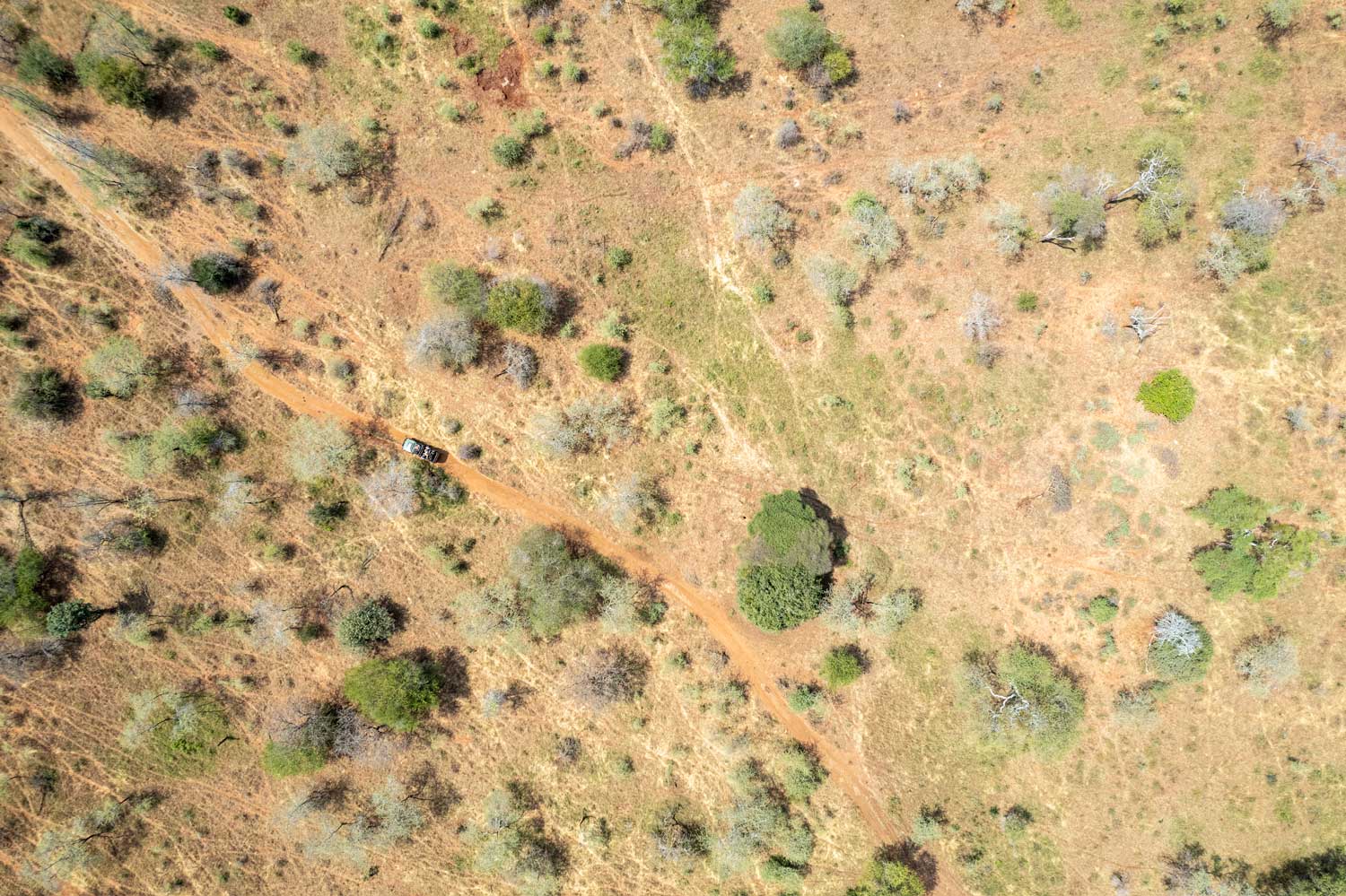
The sun was beating down on the alkali ground at midday. As the truck wound its way along a small river, the trackers watched for a nice spot for lunch or any animals that might have come down to drink. They talked quietly in the back of the Rover while Johan scanned the horizon. Everyone seemed to spot them at the same time.
Two old buffalo bulls stood in the shade of wild fig tree. They saw the truck but were reluctant to leave such a choice little bend in the river. They started with the look of passive hostility that only a cape buffalo can give; content to chew their cud if left alone. But one of the bulls was a good trophy, and the French PH waited until they were out of sight before killing the engine and preparing to try a stalk.
They moved through the cover into a position about a hundred yards from the buffalo. The equatorial sun is harsh at midday, and a cape buffalo in the shade of a tree is surprisingly difficult to make out even with binoculars. They could see the two bulls, but were unsure about which way they were facing, and once again the language barrier proved frustrating. After some time the French PH motioned to the tracker to set up the shooting sticks, trying to convey where he wanted the client to aim on the buffalo.
Johan kept back, letting the man do his job, but that sense of unease returned as he watched his friend and client draw a bead on the shapeless black form.
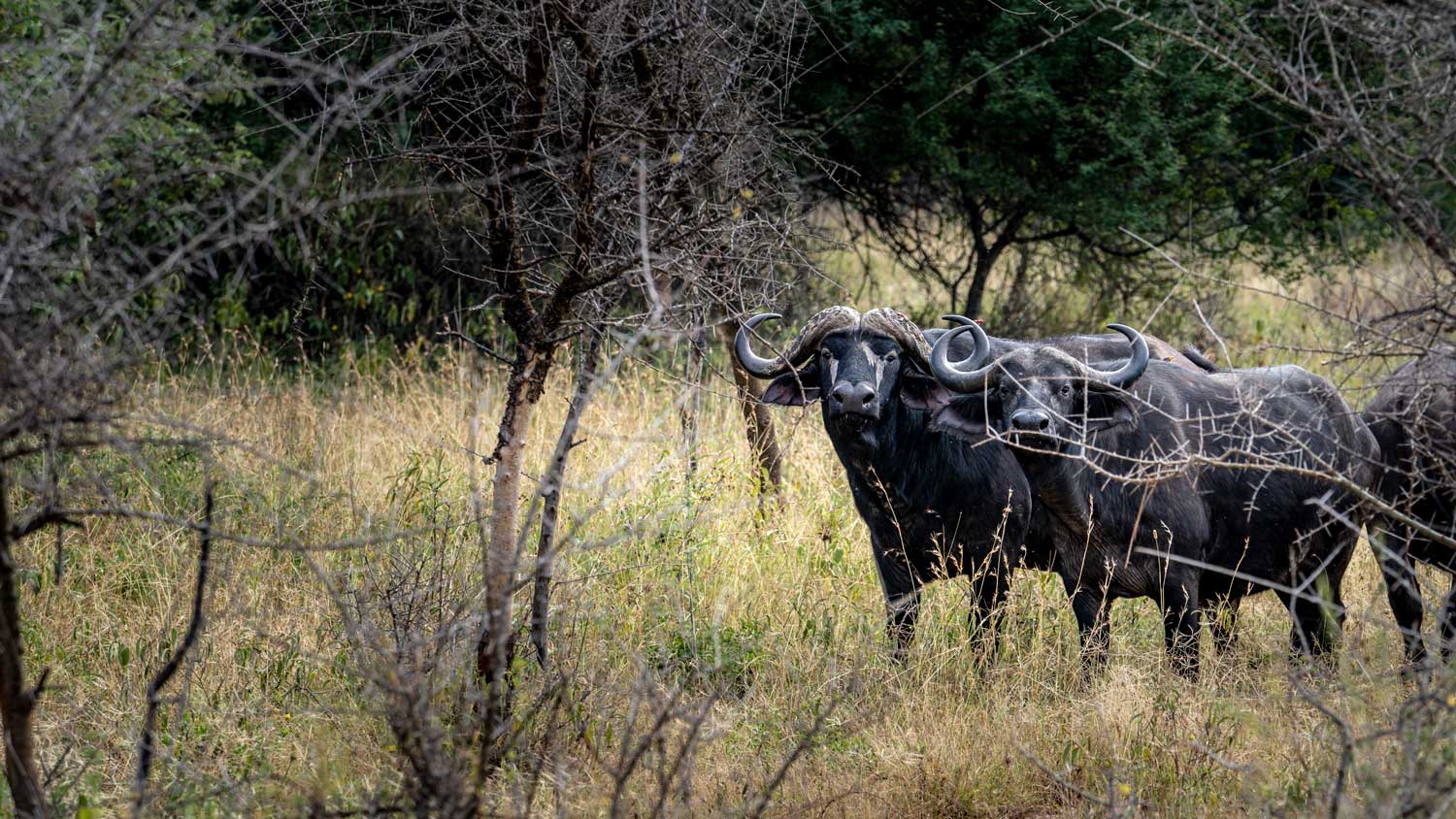
The blast of the .470 interrupted the peaceful river scene, and the two bulls turned and headed into even thicker cover on the river’s edge. The hunters rushed to where the bulls had been standing and the debate began as to whether the shot had connected. At first it seemed like a clean miss. The trackers canvassed the area like detectives at a crime scene, finding no sign of blood. But as the group tried to determine what had happened, Johan’s eyes were drawn down a narrow trail by the river. He walked about ten yards in and saw one of the worst things a cape buffalo hunter can see.
“I found a green leaf with stomach contents on it,” he says, “They were mixed in with blood. Normally, that means trouble. The animal has been gut-shot; he is in quite a bit of pain, and the wound is not fatal – at least, not immediately. He’s not going to die in the next hundred yards; he’s going to die in the next couple of days, and it’s going to be a very painful and unpleasant death. The ethical thing to do is to follow up that animal and to end his suffering – to make sure that what you’ve inflicted on him you can finish.”
As they moved down the trail, the spoor became increasingly fresh. Finally, the group jumped the bull out of a thicket. They all took off in a full sprint, Johan stopping momentarily to try for a shot. As he did, the trackers and the PH passed by him, trying to close the distance. The PH attempted a shot as they moved in, but missed, and as John caught up with the group he saw the buffalo stop, turn and come straight for the young Frenchman.
Much has been written about the charge of a cape buffalo. If you hunt enough of them, it is an inevitability. But until that day comes, you’ll always question how you would react when a one-ton buff is bearing down on you. Like a soldier heading into his first battle, you can prepare and practice for the situation, but until it occurs there will always be that uncertainty.
Johan has faced down several charging buffalo in his career, and he talks of the danger without dramatics or braggadocio. This is a man who has pondered his unique job hazards, and he speaks philosophically of what a buffalo charge means to the hunter.
“Nobody can prepare themselves for that moment. I’ve heard a lot of professional hunters and a lot of clients say “I wish that bastard would turn and charge.’ And if it works out, great, it makes us feel better as men. Because in our eye we have withstood a challenge . . . we have overcome a fear in our lives that we don’t deal with often. But when it goes wrong, it goes terribly wrong, and you say to yourself ‘my God I’m in trouble. I’m in deep trouble, and I honestly don’t know whether or not I’m going to make it.’”
For Johan Calitz, it was all about to go terribly wrong, and suddenly that great uneasiness he’d felt at daybreak was about to make complete sense.
I reached the French PH just before the buffalo did. But my movement caught the buffalo’s eyes, and he changed his focus to me as he drew closer,” Johan recalls. He shot his double, a .500 Nitro Express 3½, from the hip, but with no positive results. He then jumped out of the way, trying another shot from the hip, which he missed. The buffalo hit him and crushed his ankle with the first swipe, spinning Johan 180 degrees.
“I was still on my feet when he rushed again. I tried a futile block with my right arm, which he hooked and used to throw me up in the air. I landed and made eye contact with him, and every time our eyes would meet, he would just beat the living hell out of me. He put his horn into my upper leg, picked me up and threw me again, then he shoved his horn into my abdomen and threw me once more. Finally, I decided to play dead and see if he would leave me alone.”
While Johan lay in the dirt, the PH, having fired his two barrels earlier, was forced to chase down the tracker carrying his shell belt. At the sight of the goring, the trackers had scattered in all directions, leaving Johan for dead and the French PH with an empty weapon. The client was still back down the trail, and Johan found himself alone with an animal in great pain, intent on doubling the agony towards his victim.
“The buffalo started pushing me around on the ground. He was looking for something – an obstacle, where he could crush me. And as he was pushing me, I felt he was talking to me. He made a low grunt, and I knew that it was ‘that time’ – and I started praying. And as he was pushing me, I heard a shot and then another and the buffalo raised his head for a moment and looked at me. Our eyes were only inches apart. That one bloody red, turned-up eye looked at me, and I’ve never seen so much hatred and pain and anger. But not a bit of fear. It was absolute anger. As he raised his head I turned and tried to get out from under him, and he collapsed on me and died, pinning me beneath him.”
The French PH had chased down his tracker, returned with a loaded firearm and finished the buffalo. But Johan lay underneath a ton of animal, with several large open wounds, and the danger was far from over. The trackers attempted to roll the buffalo off Johan, over his shattered ankle, which made him almost pass out from the pain. He knew that remaining conscious was critical to getting out alive, and as he lay there bleeding and broken, Johan was forced to take charge of his own rescue.
“I was trying to communicate to the Frenchman to get a radio and get help but he didn’t understand at first,” he says. “Once he left for the truck I started to go through my wounds. Amazingly, I saw these huge open wounds, saw my stomach moving, but there was no blood – which to me was a miracle. It was a prayer being answered. I knew I could not survive a severed femoral artery. I did have a punctured lung, and this was my greatest immediate concern.”
While the PH headed back to the truck to radio for help, Johan was forced to begin first aid alone. He signaled to the tracker to make a splint from some nearby trees for his leg, and then literally reinserted his bowels back into his abdomen. The pain was about to set in, and Johan lingered on the edge of consciousness in absolute misery.
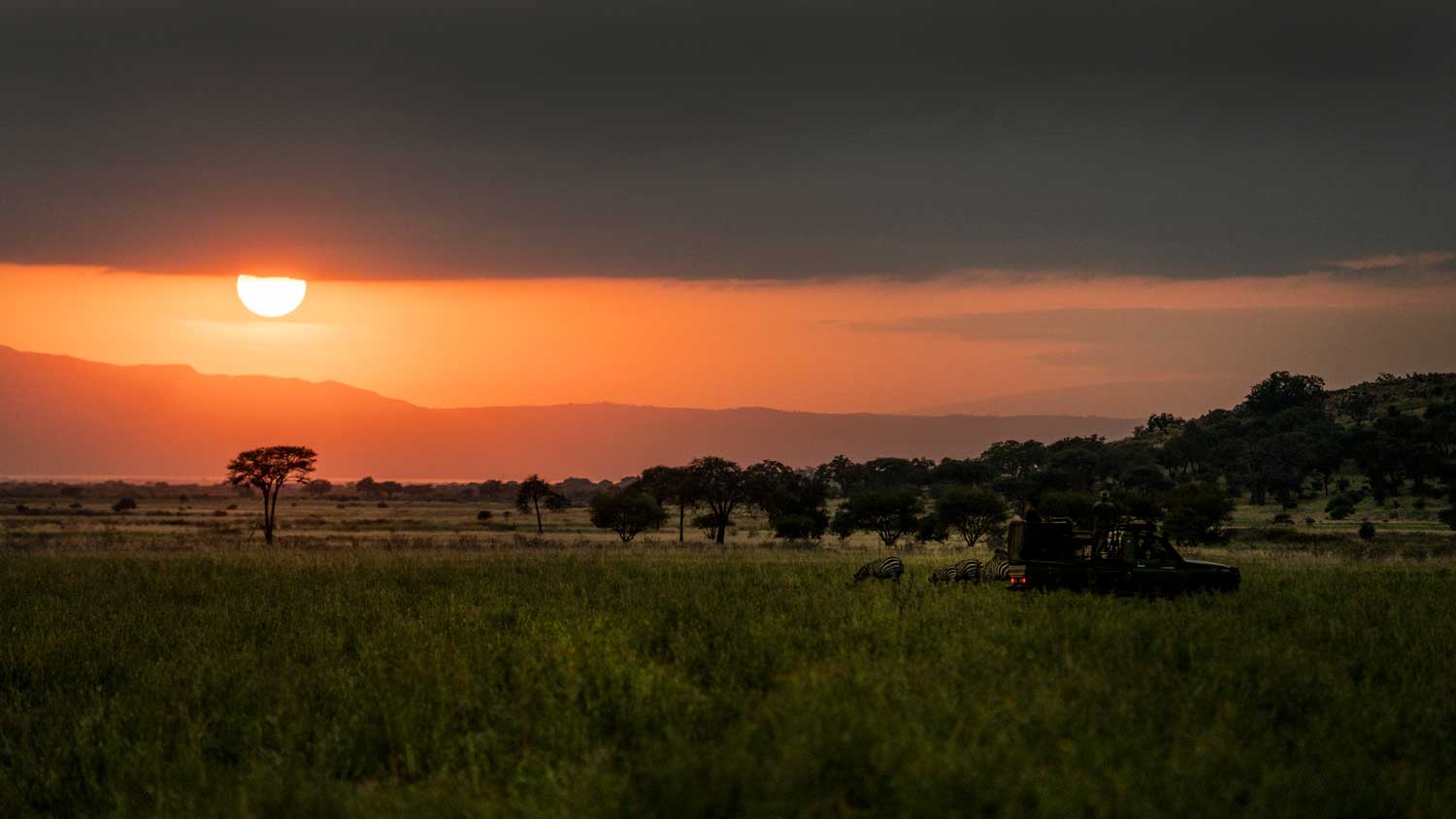
It took 4½ hours to reach medical help. Johan credits a French physician with making good calls throughout the rescue. He eased his pain with massive amounts of morphine, and insisted Johan’s arm was not to be amputated nor any blood transfusions to be given. These instructions to the Tanzanian hospital staff were the last thing Johan heard before he fell into unconsciousness.
A long hospital stay in South Africa was followed by more than a score of different surgeries. Over the past five years, Johan’s pronounced limp continues to improve, and while pain is still a constant companion, he is starting to regain a sense of normalcy after that life-changing morning in Tanzania. To return to hunting dangerous game after such an event is a physical miracle, but it is the mental game Johan knew would be the real challenge. He is at peace with fate, and with Africa and the wild game he loves so much. But he still struggles with the failings of man, and never again will he put himself in a situation beyond his control.
“When I look back, I’ve made peace with that buffalo,” he says. “It was almost expected in a career that spans more than three decades. I got away with many charging buffalo, and I stopped them. How can you expect an animal you hurt big time not to retaliate? All that buffalo did was to do what I would have done – give him my best – and that he most certainly did. If you ask me whether I am disappointed in human beings, yes I am. I would have loved someone to have helped fix me up and sort me out.
“I have to thank the French hunter for chasing down his tracker and shooting the buffalo off of me. But if you asked me, ‘Would I hunt with him again?’ I would say no. If you asked me, ‘How would I deal with the next wounded buffalo?’ I would approach it with a lot of respect, with a different mind, and with a lot of carefulness. And I will only deal with it when I’m in charge.”

